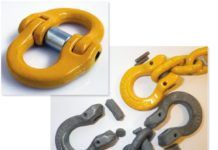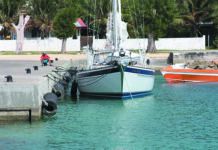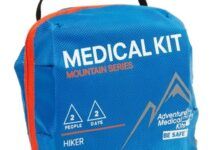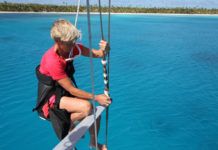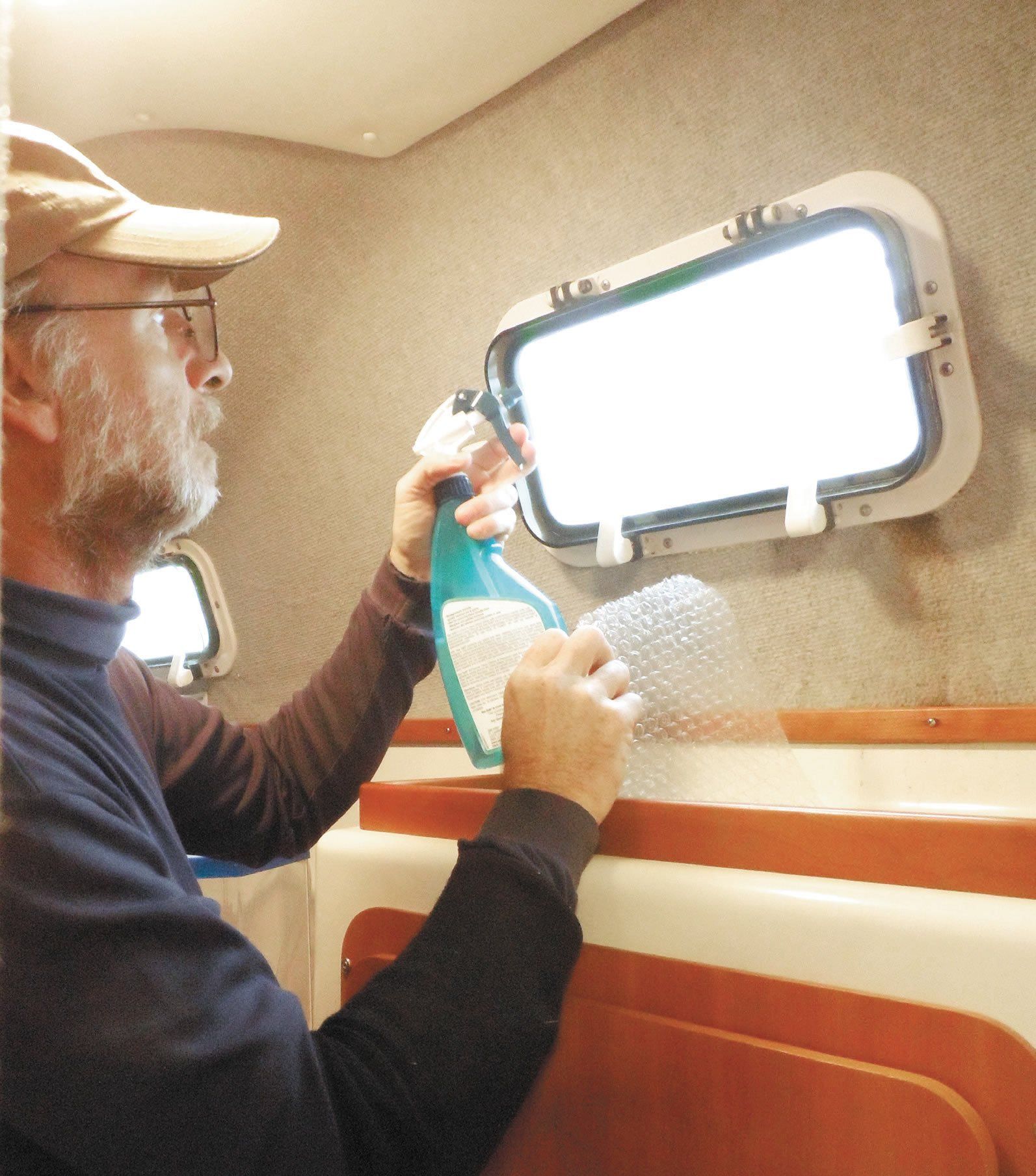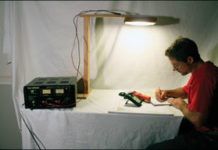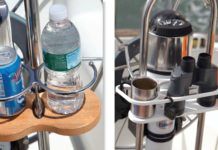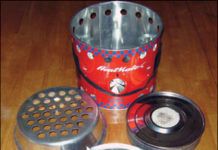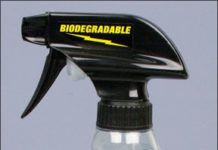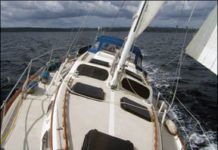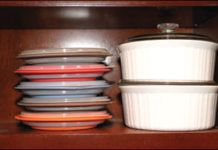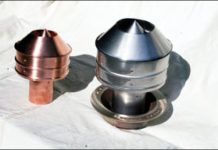Mailport: June 2010
The June 2010 issue featured letters on subjects such as: spiders, addition of color to handheld electronics, DIY boatyard recommendation and propane fridges.
Galley Lighting
When we last dropped in on the realm of interior lighting (Practical Sailor January 2009), we looked at light emitting diode (LED) replacements for incandescent bulbs in a traditional bulkhead-mounted reading light. The test revealed some significant advances in LED technology, and those advances continue today at a lightning pace. Responding to the call for energy efficiency, LED makers are packing more and more luminosity output into smaller and smaller packages. As our reading light test showed, LED technology has developed to a point where finding LED "bulbs" that can provide enough illumination for reading is no longer an issue. Results from that comparison prompted PS to consider whether another key light on our boat-the galley light-could soon go the way of the incandescent reading light. Unlike reading lights, a galley light needs to cast a very wide beam angle to illuminate a large area, something LEDs alone are not very good at.
The Top 4 Drink Holders for Your Boat
Weve spilled our share of drinks on board, and while its a shame to see a fresh drink go to waste, some beverages can stain cushions and decks. Drink holders can help minimize onboard spills, but there are a million types marketed to boat owners-from basic lifeline-mounted wire baskets to expensive Starboard or teak binnacle boxes. To find out which is most effective, Practical Sailor field-tested a sampling from several manufacturers. Three of the 10 test products were of the old-style, gimbaled wire-basket variety that hang from a lifeline: the Sail-Buoy, the Sail-a-long, and one from Snap-It. From Edson and Snap-It, we evaluated rail- or pulpit-mountable holders made of stainless and Starboard (high-density polyethylene) and three binnacle-mounted products that can accommodate multiple drinks. The two products we tested designed to mount on vertical surfaces like a bulkhead were the Sea-Fit and the Bar-buoy.
Mailport: April 2010
Letters to Practical Sailor's April 2010 issue include: MOB drills, tethers, nav lights, cleats, no-buff shines and tankless water heaters.
New Clear, No-rust Propane Tanks
Unlike aluminum or steel propane tanks, clear composite tanks allow users to see how much fuel remains, a nice feature in an LPG tank.Following our year-long evaluation of Ragasco’s 9-kilogram one-piece blow-molded tank, Practical Sailor tested the American-made Lite Cylinder, a two-piece composite tank. The two tanks have nearly identical dimensions, and may be a challenge to fit in a standard propane locker designed for metal tanks. In fire tests, composite tanks melt rather than “explode” like metal tanks, giving them a slight edge in safety, and the non-metal tanks resist rusting, a common problem of aluminum LPG tanks.
HeatMate Takes the Chill Off
When temperatures decrease, the search for viable heating options by shivering sailors invariably increases. A recent cold winters night provided the perfect opportunity for one blue-nosed liveaboard Practical Sailor tester to check out the HeatMate 5200 heater-stove from Contoure International Inc. The HeatMate 5200 is a portable, non-pressurized alcohol heater that easily converts into a stove. Weighing in at about 5 pounds, the fairly compact, aluminum unit measures approximately 11.75 inches tall by 11.5 inches in diameter, and it comes assembled and ready to go.
The Search is on for the Best Degreaser for Marine Grit and Grime
Practical Sailor searched for the top liquid degreasers to tackle heavy grease on marine stoves and marine engines. Eleven products were tested, including Chomp oil eater, Holy Cow degreaser, Kafko degreaser, Krud Kutter degreaser, Mary Kate Grease Away, Star brite All Purpose Citrus Cleaner Degreaser, and Star brite Sea Safe Cleaner Degreaser. Practical Sailor tested the liquid marine cleaners on grimy fiberglass panels and on aged, greasy farm equipment engines.
Mailport: February 2010
The February 2010 issue of Practical Sailor has letters on the following topics: requests for more used boat reviews, foggy electronics, hard varnishes, propane fridges and Iphone apps.
Cookin with Collapsible Bakeware
Space is always at a premium on a boat, and the galley tends to get very small, very quickly-even with a minimum of pots, pans, and cooking utensils onboard. Practical Sailor reviewed one galley space-saver, nesting cookware, in the April 2009 issue, and more recently tried out FoldTuk Kitchenware. Where nesting cookware is designed for stovetop use, the FoldTuk line can be used to bake, serve, and cold-store a meal, all in the same rattle-proof container, which saves on storage space, water for dishwashing, and power.
Navigator Wood Stoves Provide Classic Heating and Cooking Onboard
Navigator Stoves, based on Orcas Island in Washington state, produces three classic wood-burning stoves for use onboard boats and in cabins, RVs, and other small structures. The Little Cod and Sardine stove models are produced using the patterns originally made at the Lunenberg Foundry in Nova Scotia. The Halibut stove model is based on an old favorite, the Shipmate stove. The cast-iron custom-made stoves and can be ordered in the original stove polish or one of six porcelain enamels. They can burn wood and charcoal. The Halibut stove model can also burn coal. For use in warmer months, Navigator has designed denatured-alcohol drop-in burners for cooking.











